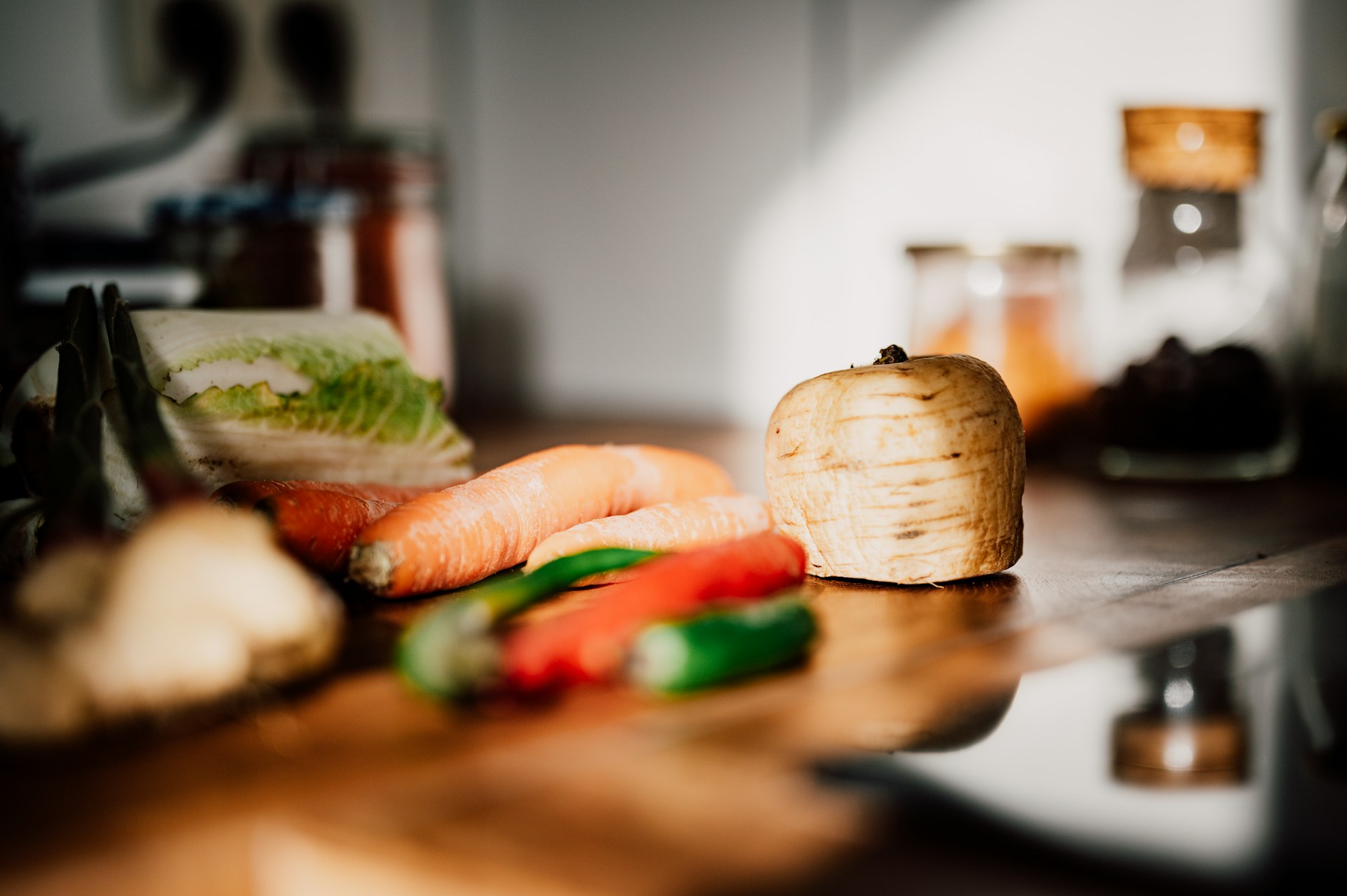[su_note note_color=”#ffe3e6″]This post contains affiliate links. Affiliate disclosure: As an Amazon Associate, we may earn commissions from qualifying purchases from Amazon.com and other Amazon websites.[/su_note]
Cooking with cannabis has become increasingly popular as more states legalize medical marijuana. In the United Kingdom, where medical cannabis is also permitted, individuals are discovering the joys of incorporating cannabis oil into their culinary creations. Not only does it offer a unique flavor profile, but it also provides the potential health benefits associated with cannabinoids.
Before embarking on your cannabis-infused cooking journey, it’s important to understand the legalities surrounding UK medical cannabis. Familiarize yourself with the regulations and ensure you are in compliance with the law.
When it comes to cooking with cannabis oil, selecting the right product is essential. Consider the ratio of THC to CBD in the oil, as this will determine the psychoactive effects and potential health benefits. Understanding the extraction methods used to obtain the oil is also crucial to ensure its purity and safety.
Once you have chosen the appropriate cannabis oil, it’s time to explore the vast array of recipes and dishes that can be transformed with its infusion. From sweet treats to savory delights, cannabis oil can be incorporated into various dishes. However, it’s important to adjust the quantities and flavors to balance the inherent bitterness of the oil.
While the culinary possibilities are endless, it’s important to consider the cooking techniques and dosage considerations when working with cannabis oil. Heat tolerance is a key factor to preserve potency, and starting with a small dose and gradually increasing it is the best approach to find your individual tolerance level.
By following these guidelines and experimenting with different recipes, you can unlock a world of delicious and potent cannabis-infused edibles, all within the legal framework of using medical cannabis in the UK.
Ladle of Contents
Key Takeaways:
- Ensure compliance with UK medical cannabis regulations when cooking with cannabis oil.
- Select cannabis oil with the appropriate THC to CBD ratio for your desired effects.
- Choose cannabis oil that has been extracted using safe methods.
- Experiment with incorporating cannabis oil into various sweet and savory recipes.
- Adjust flavors and quantities to balance the bitterness of cannabis oil.
- Be mindful of heat tolerance and avoid high heat when cooking with cannabis oil.
- Start with a small dose of cannabis-infused edibles and gradually increase if desired.
Choosing the Right Cannabis Oil for Cooking
When it comes to cooking with cannabis oil, selecting the right oil is crucial for a successful culinary experience. Two key components to consider are the ratio of THC to CBD and the extraction method used. THC (tetrahydrocannabinol) is the psychoactive compound that provides the “high” effect, while CBD (cannabidiol) offers various health benefits without the psychoactive properties.
CBD oil is popular for its therapeutic properties and is often used for medicinal purposes. Its non-intoxicating nature makes it suitable for those who do not wish to experience the psychoactive effects of THC. On the other hand, THC-rich cannabis oils are preferred by individuals looking for the “high” associated with marijuana.
Depending on your preferences and health conditions, you can choose a cannabis oil that is high in CBD and low in THC or vice versa. Some individuals may require a higher THC potency for medical reasons, while others may prioritize CBD for its therapeutic benefits. It’s important to consult with a healthcare professional or specialist to determine the ideal ratio for your needs.
In addition to the THC-CBD ratio, it’s essential to ensure that the cannabis oil you purchase has been extracted using safe methods. Extraction methods such as CO2 extraction or solventless extraction are preferred, as they eliminate the risk of residual solvents or harmful substances. It’s advisable to select oils that have been tested by a reputable laboratory to ensure quality and purity.
THC-CBD Ratios and Extraction Methods
| Cannabis Oil Type | THC to CBD Ratio | Extraction Method |
| High THC Oil | High THC, low CBD | CO2 Extraction |
| High CBD Oil | High CBD, low THC | CO2 Extraction or Solventless Extraction |
| 1:1 Oil | Equal ratio of THC and CBD | CO2 Extraction or Solventless Extraction |
Choosing the right cannabis oil for cooking is a personal decision that depends on your desired effects and health needs. By understanding the THC-CBD ratio and extraction methods, you can make an informed choice that suits your preferences and ensures a safe and enjoyable culinary experience. Always remember to start with a small dose and gradually increase it to find your optimal dosage.
Incorporating Cannabis Oil into Recipes
Cannabis oil can be a versatile ingredient in both sweet and savory dishes, adding a unique twist to your favorite recipes. When using cannabis oil in cooking, the key is to infuse it into a fat or oil-based ingredient to ensure proper incorporation. Butter, ghee, lard, and a variety of vegetable or nut oils are excellent choices for infusing cannabis oil.
To incorporate cannabis oil into a recipe that doesn’t include a fat-based ingredient, you can dilute the cannabis concentrate in a small amount of spirits such as vodka or rum. This method allows you to add the cannabis oil to cocktails or other recipes that require a liquid component. However, it’s important to note that wine and beer, being water-based, are not suitable carriers for cannabis oil.
When working with cannabis oil in recipes, it’s essential to consider adjusting the flavors and sweetness to balance out the inherent bitterness of the oil. Cannabis oil can have a strong taste, so you may need to increase the amount of sugar, spices, or other flavorings in your recipe to mask the bitterness and achieve a more enjoyable flavor profile.
Cooking Techniques and Dosage Considerations
When cooking with cannabis oil, it is essential to consider certain techniques and dosage considerations to ensure a successful and enjoyable experience. Properly handling the heat is crucial to preserve the potency of the cannabis oil. It is recommended to avoid using cannabis-infused oil directly on high heat, such as frying in a hot pan, as it may diminish the potency of the oil.
Preheating the fat or oil to a temperature similar to that of coffee or tea (160-185 degrees F) is ideal for cooking with cannabis oil. This temperature range allows the active compounds in the oil to infuse into the dish without sacrificing potency.
Choosing a lab-tested concentrate is another important factor when cooking with cannabis oil. Lab testing ensures accurate measurement of the active ingredients, such as THC and CBD, in the oil. This allows for precise dosage customization, giving you better control over the effects of your cannabis-infused dishes.
When it comes to dosage, it is always recommended to start with a small dose and gradually increase it. Each individual reacts differently to cannabis, so finding your ideal dosage is a personal journey. Starting with a small dose allows you to gauge your tolerance and the desired effects without overconsumption.
By considering these cooking techniques and dosage considerations, you can confidently embark on your culinary adventure with cannabis oil. Remember to handle the heat properly, choose a lab-tested concentrate, and start with a small dose to create delicious and potent cannabis-infused dishes.
Conclusion
As more states in the United States legalize medical marijuana, cooking with cannabis oil has become a popular way for individuals to enjoy the benefits of cannabis without smoking. Whether you’re looking to explore new culinary experiences or seeking the therapeutic properties of cannabis, cooking with cannabis oil opens up a world of delicious and potent possibilities.
Before diving into cooking with cannabis, it’s essential to understand and comply with the legal regulations in your area. This ensures a safe and legal experience. Additionally, selecting the right cannabis oil is crucial for achieving the desired effects. Consider the ratio of THC to CBD based on your preferences and health needs.
When incorporating cannabis oil into recipes, it’s important to infuse it into a fat or oil-based ingredient such as butter or vegetable oil. This allows for better absorption of the cannabinoids and ensures an even distribution throughout the dish. Keep in mind that adjusting the flavors in the recipe may be necessary to balance out the inherent bitterness of the oil.
To enjoy a safe and enjoyable experience, it’s recommended to start with a small dosage of cannabis-infused edibles and gradually increase as needed. Understanding the heat tolerance of cannabis oil and using lab-tested concentrates help to preserve potency and accurately measure dosage. By experimenting with different recipes and doses, you can create unique and flavorful cannabis-infused edibles that suit your individual preferences and needs.



